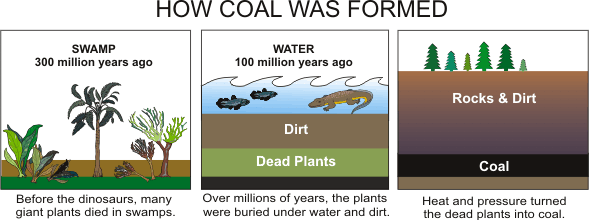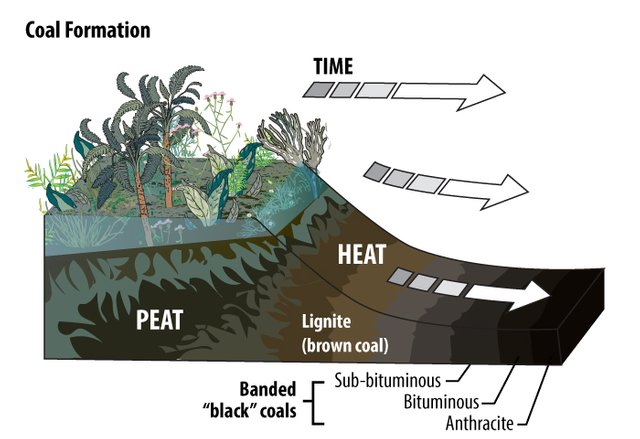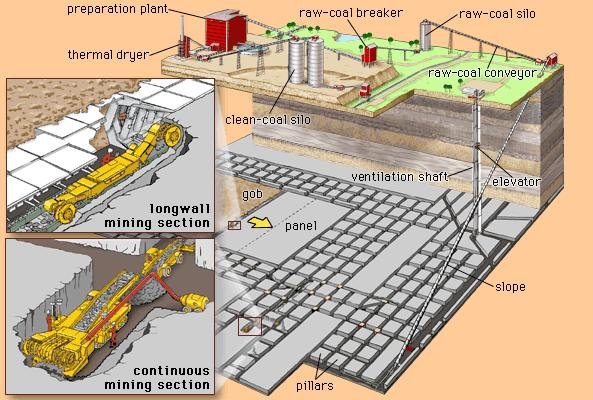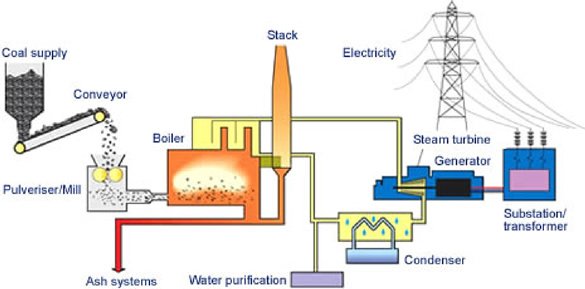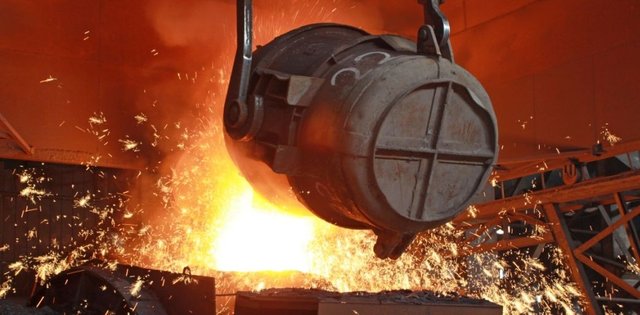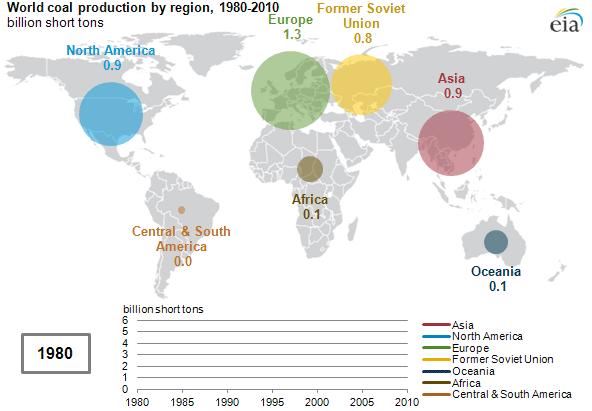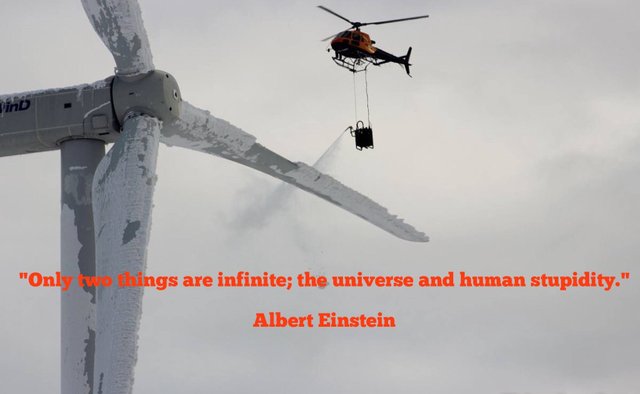Energy Sources Explained Part 02: Coal history, usage and drawbacks
What is coal?
Coal is a black or dark brown combustible rock primarily of carbon. It was formed millions of years ago when ferns, plants and trees died and fell into swamps and other bodies of water. It is a part of the fossil fuel family.
How is it formed?
The humid conditions prevented the organisms from decaying completely. After millions of years of heat and pressure coal formations appeared.
How do we classify coal?
Coal is classified into six main types based on carbon and heat.
- Peat 6%-25% carbon ( A mass of recently accumulated to partially carbonized plant debris. It is not used for energy purposes)
- Lignite 25%-35% carbon ( Lignite is the lowest rank of coal. It is a peat that has been transformed into a rock, and that rock is a brown-black coal.)
- Sub-Bituminous 35%-45% carbon ( Sub bituminous coal is a lignite that has been subjected to an increased level of organic metamorphism. This metamorphism has driven off some of the oxygen and hydrogen in the coal.)
- Bituminus 45%-86% carbon ( Bituminous is the most abundant rank of coal. It accounts for about 50% of the coal produced in the United States. Bituminous coal is formed when a sub bituminous coal is subjected to increased levels of organic metamorphism.)
- Anthracite 86%-99,8% carbon (Anthracite is the highest rank of coal. It has a carbon content of over 87% on a dry ash-free basis. Anthracite coal generally has the highest heating value per ton on a mineral-matter-free basis. )
- Diamond 100% carbon (Diamond is the hardest material made as a natural formation. It is not used for energy purposes)
The main idea in usage
The general rule is that the higher the grade of coal the cleaner it burns and the more versatile its uses. (In Greece we use Lignite primarily which produces a lot of CO2 emissions plus cancer to the population).
Coal mining
Coal is extracted from the earth through surface or underground mining. The choice of mining method is largely based on the geology of the coal deposit and its distance from the surface. Underground mining currently accounts for larger share of the worlds coal production than surface mining. But surface mining is less costly and has bigger earnings. Coal can be burned for heating or to produce electricity.
How is electricity produced?
To convert thermal coal to electricity it is first milled to powder. That increases the surface area and allows coal to burn more quickly. The hot gases and heat energy produced from combustion converts water into steam to run a turbine and generator.
Other uses
Higher quality coal is also useful raw material. For example it can be converted to coke for steelmaking. Coal can also be converted to liquid or synthetic gas by advanced chemical processes making a costly replacement for natural gas or liquid fuels for transportation.
Why coal?
Coal is highly abundant and cheap. Coal has powered the industrialization of many nations over history and continues to today. It is a big player into today's system providing 40% of the worlds electricity.
Coal drawbacks
One major concern with coal is the mining practices used to extract the resource. Ecological impacts and human safety an health issues both for workers and neighboring communities are growing concerns. Moreover coal is the most CO2 intensive fossil fuel when combusted because it is composed of carbon in great deal. Also coal contains other elements that cause pollution problems including but not limited to sulfur, nitrogen, mercury and heavy metals. Sulfur is leading cause of acid rain and nitrogen emissions contribute greatly to smog. In addition particulates from coal combustion are harmful to human health. Coal adds up a great deal to climate change.
Solutions to coal drawbacks
Filters for its emissions are deployed, but due to high costs they are not used all the time and are kept closed for saving money. After the filters capture CO2 emissions they are stored again underground.
That's Coal. Thanks in advance for reading and supporting my work. Next comes Wind energy.
Source links:
1) http://library.tee.gr/digital/m2474/m2474_palavos.pdf
2) https://www.studentenergy.org/topics/coal
3) https://env-pol.teiwm.gr/index.php?lang=el (well you have to be a student or graduate to be able to have access)
4) http://www.sciencedirect.com/science/article/pii/S1674526409601873
Energy sources explained part 01: https://steemit.com/science/@diasdr/energy-sources-explained-part-01-energy-units
You can find more articles of mine here: https://steemit.com/@diasdr

